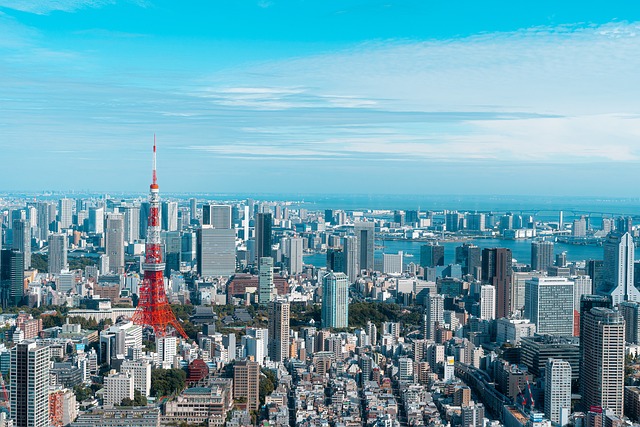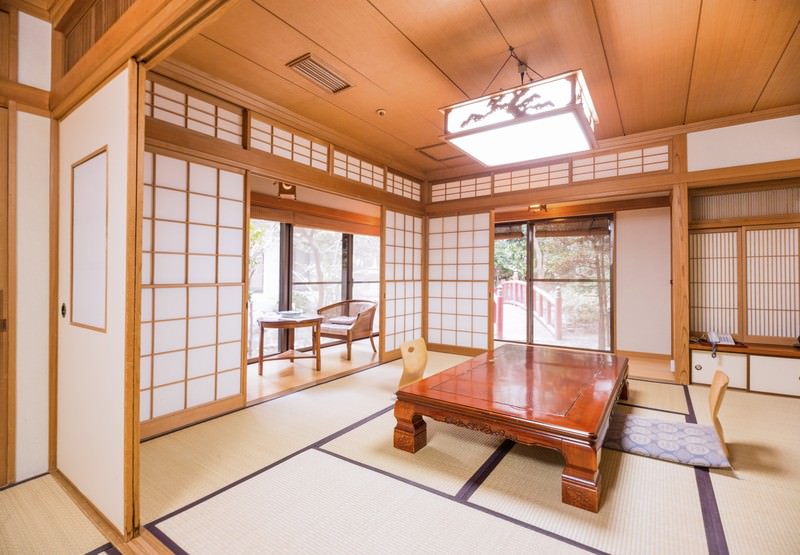जापान की पब्लिक ट्रांसपोर्ट साफ़, सस्ती और चौंकाने वाली हद तक आसान है।
टोक्यो में हर कुछ सौ मीटर पर स्टेशन होता है—छोटी सी राइड और थोड़ी वॉक से आप कहीं भी पहुँच सकते हैं। गाड़ी? ज़रूरत ही नहीं। किराया ¥150 से शुरू होता है, और टैक्सी की तुलना में ट्रेन काफी सस्ती है। इतनी सुरक्षित है कि छोटे बच्चे भी अकेले ट्रेन से स्कूल जाते हैं—देखना हो तो यह वीडियो देखें: CBS Morning “Japan encourages parents to let kids walk to school solo”
इस गाइड में हम आपको ट्रेन और ज़रूरत पड़ने पर लोकल बस का इस्तेमाल भी सिखाएँगे।
English
Japan’s public transportation is clean, affordable, and surprisingly easy to use.
In Tokyo, stations are just a few hundred meters apart—most places are reachable with a short ride and a quick walk. Owning a car? Not really necessary. Fares start at ¥150, and trains are much cheaper than taxis. It’s also incredibly safe—kids ride trains to school on their own (Want to see what that looks like? Check out this video: CBS Morning “Japan encourages parents to let kids walk to school solo”).
This guide will help you ride trains with confidence—and hop on a local bus when needed.
New to your neighborhood? Before hopping on a train, you might want to check out our guide on how to explore your area on foot.
→ [Walking Around Your Neighborhood]
रेलवे का नक्शा: टोक्यो मेट्रो और JR नेटवर्क / Train Maps: Tokyo Subway and JR Network
यहाँ दो मुख्य ट्रेन नेटवर्क के नक्शे हैं, जिन्हें जानना आपके लिए फायदेमंद होगा: यह है टोक्यो मेट्रो का नक्शा—जो शहर के केंद्र में चलने वाली अंडरग्राउंड सबवे लाइनें दिखाता है।
English
Here’s a quick look at the two major train maps you’ll want to know: This is the Tokyo Metro map—showing the subway network that runs through the central city area.
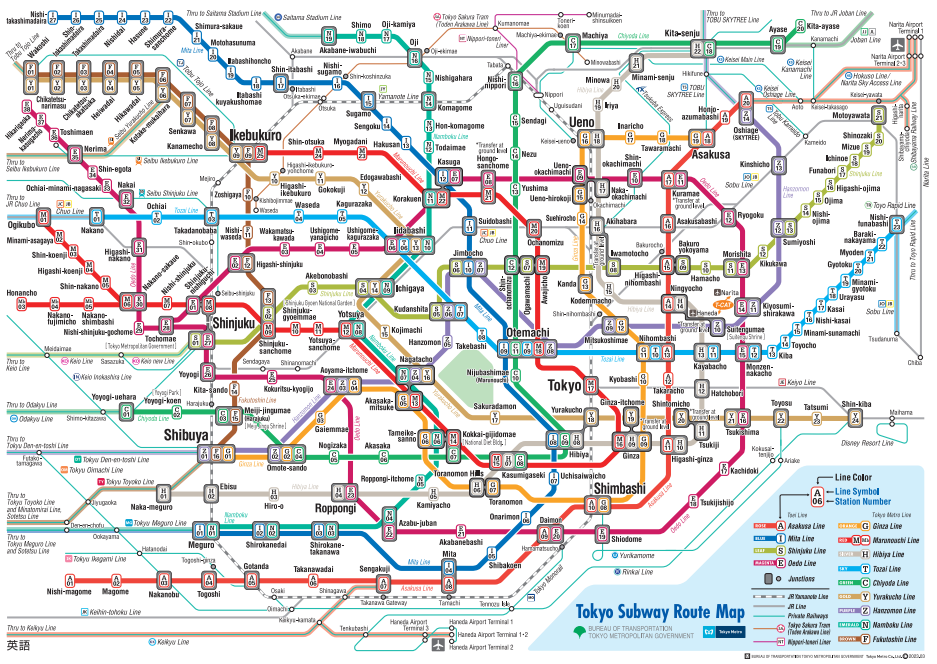
और यह है JR नेटवर्क—जो न केवल सेंट्रल टोक्यो, बल्कि Narita और Haneda एयरपोर्ट्स और आसपास के शहरों को भी जोड़ता है।
English
And this is the JR network—covering not only central Tokyo, but also connections to Narita and Haneda airports, and other nearby cities.
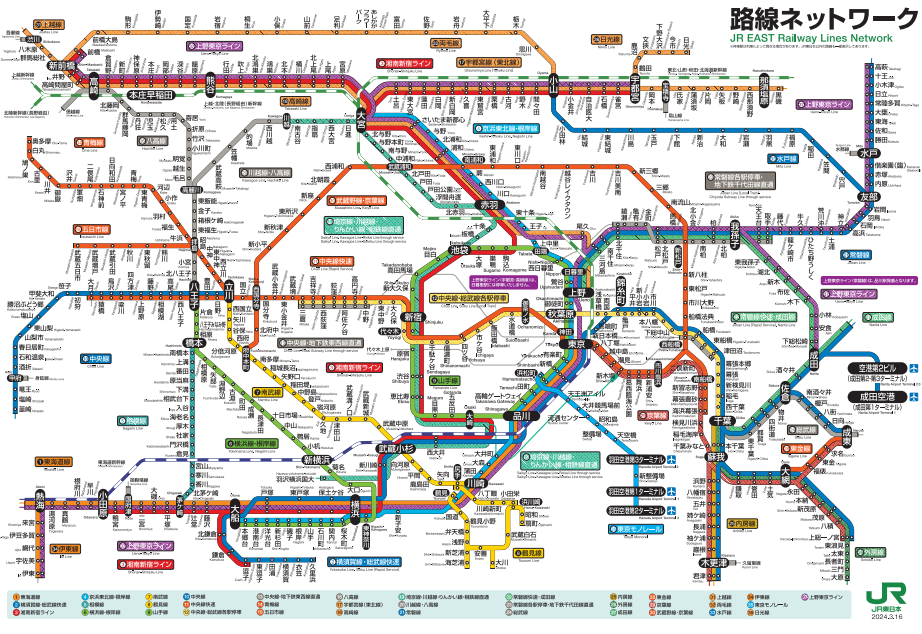
असल में तो यह सिस्टम और भी ज़्यादा जटिल है, क्योंकि इसमें कई प्राइवेट रेलवे लाइनें भी शामिल होती हैं। लेकिन घबराइए मत—हम आपको धीरे-धीरे रास्ता दिखाएँगे।
English
In reality, the system is even more complex, with many private railway lines connecting into the mix. But don’t worry—we’ll help you navigate it step by step.
ट्रेन टिकट कैसे खरीदें / How to Buy Train Tickets
सबसे पहले, एक ट्रांसपोर्ट IC कार्ड खरीद लो!
अगर आप जापान में ट्रेन लेने की सोच रहे हैं, तो SUICA या PASMO नाम की एक प्रीपेड कार्ड ज़रूर लें।
इस कार्ड से आपको हर बार टिकट खरीदने की ज़रूरत नहीं पड़ेगी—बस टैप करो और अंदर जाओ!
English
Step One: Get Yourself an IC Card!
If you’re planning to ride trains in Japan, you absolutely need a SUICA or PASMO card. Think of it like a prepaid travel card—you won’t need to buy a paper ticket every time. Just tap and go!

यह कार्ड SUICA या PASMO किसी भी नाम से मिल सकता है — पर काम दोनों एक जैसा ही करते हैं। ये IC कार्ड न केवल हर ट्रेन कंपनी की ट्रेनों में, बल्कि पूरे जापान में बसों, टैक्सियों और यहां तक कि कन्वीनियंस स्टोर्स में भी चलते हैं। अकेले टोक्यो मेट्रोपॉलिटन एरिया में 85 से ज़्यादा रेल लाइनें हैं, इसलिए यह कार्ड होना लगभग ज़रूरी है।
स्टेशन गेट्स के पास की टिकट मशीनों से आप ये कार्ड खरीद सकते हैं, और जब चाहे रिचार्ज कर सकते हैं। अगर आप इसमें लगभग ¥5,000 रख लें, तो कई दिन तक बिना टेंशन सफर कर सकेंगे।
English
Whether it’s called SUICA or PASMO depends on where you buy it—but they work the same. These IC cards can be used not just for all trains, but also for buses, taxis, and even at convenience stores across Japan. With over 85 rail lines in the Tokyo metropolitan area alone, having one is practically essential.
You can buy one at ticket machines near the station gates and recharge it anytime. Keep around ¥5,000 loaded, and you’ll be set for a few days of travel!
चलिए ट्रेन में चढ़ते हैं / Let’s Try Boarding a Train
एंट्री गेट पार करना / Getting through the ticket gate
अब टिकट लिया है, तो ट्रेन में चढ़ते हैं!
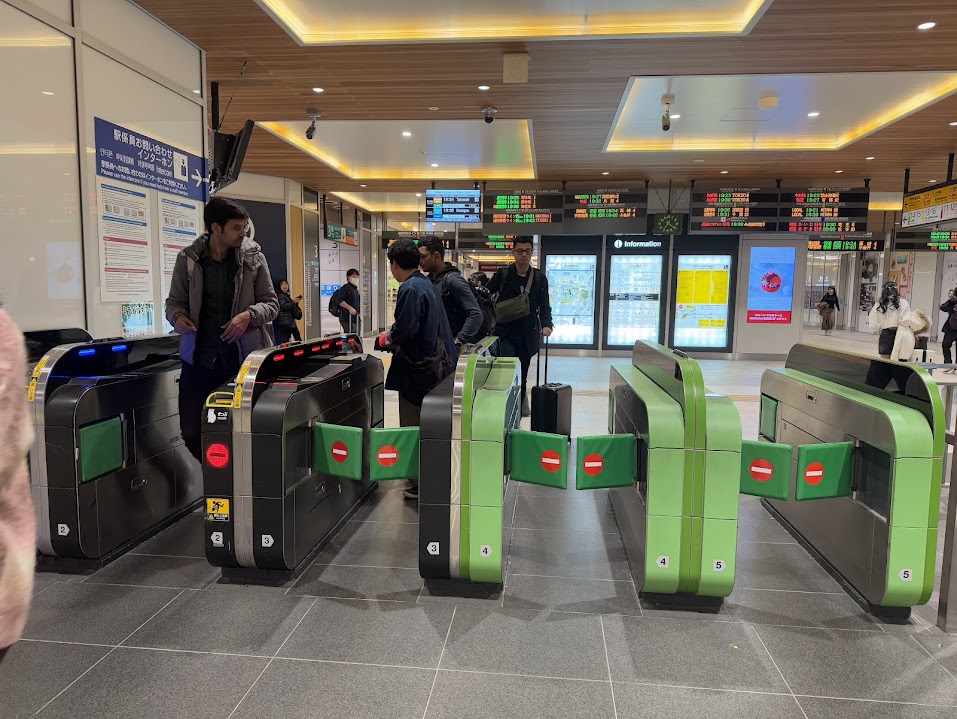
जापान के स्टेशन में एंट्री गेट पूरी तरह ऑटोमैटिक होते हैं। बस अपना IC कार्ड सेंसर पर टैप करें—अगर आपके कार्ड में पैसे हैं तो गेट खुलेगा और आप अंदर जा सकते हैं। अगर बैलेंस कम है, तो स्क्रीन पर लाल अक्षरों में एरर आएगा और गेट नहीं खुलेगा। ऐसे में पास की मशीन से रिचार्ज कर लें।
English
Now that you’ve got your card, let’s board a train!
Train stations in Japan use automated ticket gates. Just tap your IC card on the reader—if there’s enough balance, the gate opens and you’re in. If not, a red message appears and the gate won’t open. In that case, head to a nearby machine to recharge and try again.
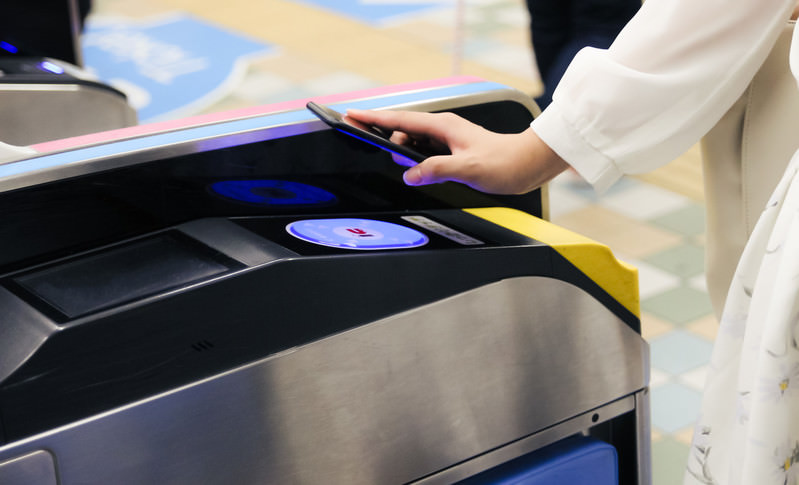
सही प्लेटफॉर्म ढूंढना / Finding your platform
ज्यादातर स्टेशन पर कई ट्रेन लाइनें होती हैं, और हर लाइन का एक रंग होता है। बस अपने लाइन के रंग वाली साइन को फॉलो कीजिए—आप आसानी से प्लेटफॉर्म तक पहुँच जाएंगे। कई साइन यह भी बताते हैं कि वहाँ तक पहुँचने में कितने मीटर बाकी हैं—जब रास्ता लंबा लगे, तो यह काम आता है।
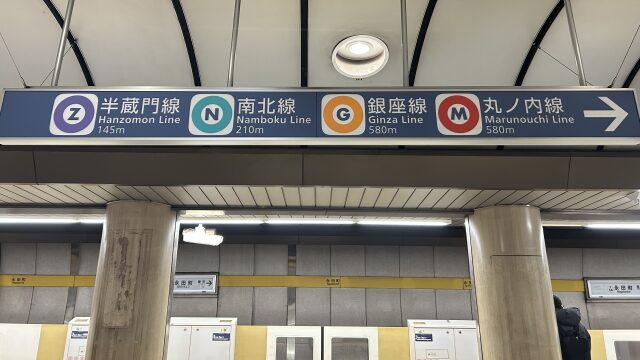
कुछ प्लेटफॉर्म ज़मीन के काफ़ी नीचे होते हैं, तो अगर तीन या उससे ज़्यादा एस्केलेटर से नीचे जाना पड़े, तो चौंकिए मत—यही है जापानी सफर का मज़ा।
English
Most stations are mini transit hubs with several lines running through. Each line is color-coded, so just follow the signs in your line’s color to reach your platform. Many signs even show how many meters are left—handy when you’re not quite sure how far you need to go.
Some platforms are located deep underground, so don’t be surprised if you find yourself gliding down three or more escalators. It’s all part of the journey.

प्लेटफॉर्म पर खड़े रहना / Waiting on the platform
प्लेटफॉर्म पर ज़मीन पर निशान बने होते हैं—यह बताते हैं कि ट्रेन के दरवाज़े कहाँ खुलेंगे और आपको कहाँ खड़ा होना है। लोग इन निशानों के दोनों ओर line up neatly करते हैं और अपने नंबर का इंतज़ार करते हैं। जब दरवाज़ा खुले, तो पहले उन यात्रियों को उतरने दें जो ट्रेन से बाहर आ रहे हैं—उसके बाद अपनी बारी में चढ़ें।
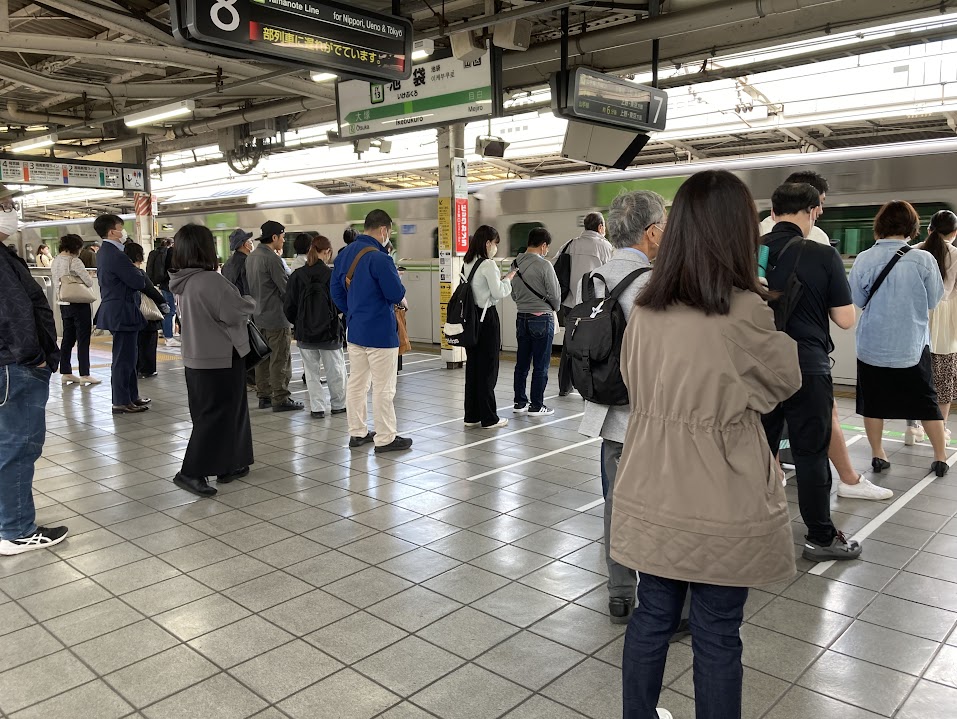
हर दरवाज़े को स्टेशन स्टाफ कैमरे से देख रहा होता है। अगर कोई बहुत पास खड़ा है, तो ट्रेन तब तक नहीं चलेगी। तो घबराइए मत—आराम से, धीरे-धीरे चढ़िए। जल्दी करने की ज़रूरत नहीं है… यह कोई कुर्सी की दौड़ नहीं है 🙂
English
At the platform, you’ll notice marks on the ground showing where to wait—on both sides of where the train doors will be. People line up neatly along these marks. When the doors open, let passengers exit first, then board in order.
All doors are monitored by station staff via cameras, and the train won’t leave if someone is standing too close. So there’s no need to rush—just board calmly when it’s your turn. Don’t worry, it’s not a game of musical chairs.
ट्रेन के अंदर / Inside Train
ट्रेन के अंदर, आवाज़ थोड़ी धीमी रखिए—यहाँ के लोग सफर के दौरान शांति को पसंद करते हैं। तेज़ आवाज़ में बात करना या फोन पर बात करना अच्छा नहीं माना जाता (और कभी-कभी लोग सोचते हैं, “इसने तो मैनर्स सीखे ही नहीं!”). ज़रूरत हो तो धीमी आवाज़ में बात कीजिए—आपकी समझदारी नोटिस की जाएगी 🙂

हर दरवाज़े के ऊपर एक स्क्रीन होती है जो दिखाती है कि आप अभी कहाँ हैं और अगला स्टेशन कौन सा है। और हर स्टेशन से पहले जापानी और अंग्रेज़ी दोनों में अनाउंसमेंट आता है, तो घबराइए नहीं—कहाँ उतरना है, ये साफ़-साफ़ पता चल जाएगा।
English
Inside the train, try to keep your voice down—people value quiet spaces, especially during their commute. Loud conversations or phone calls are seen as inconsiderate (or sometimes just… a little clueless). If you really need to talk, a quiet voice goes a long way.
Above the doors, you’ll find a monitor showing your current location and the next station. And before each stop, you’ll hear clear announcements in both Japanese and English, so no worries—you’ll know exactly when to get off.
लोकल बस कैसे लें / How to Ride a Local Bus
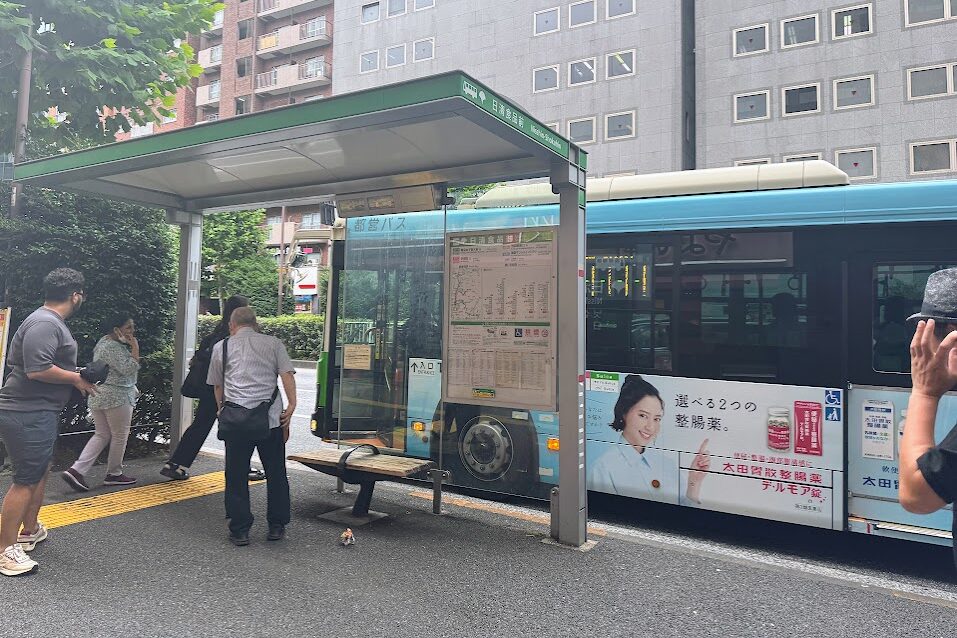
शायद आप बस का ज़्यादा इस्तेमाल न करें, लेकिन कभी-कभी जब ट्रेन पास न हो और चलने की ताकत भी कम हो—तो बस एकदम काम की चीज़ बन जाती है। ऐसे किसी दिन के लिए, ये गाइड आपके काम आएगा।
टोक्यो में लोकल बसें बहुत ही घने नेटवर्क में चलती हैं। उनकी सबसे बड़ी खासियत? सीढ़ियाँ नहीं चढ़नी पड़तीं और अक्सर बस स्टॉप आपके असली गंतव्य के बहुत करीब होता है। इसी वजह से, यह खासकर बुज़ुर्ग यात्रियों में लोकप्रिय है।
(हाईवे बसें भी होती हैं जो एयरपोर्ट और शहरों के बीच चलती हैं, पर अभी हम लोकल बस की बात कर रहे हैं।)
बसें ट्रेनों जितनी बार-बार नहीं आतीं—आमतौर पर 1 से 10 प्रति घंटा। सुबह 6 बजे से रात 10 बजे तक चलती हैं।
English
You might not use the bus often, but when you’re tired of walking and there’s no train in sight—it can be a real lifesaver. Just in case that moment comes, here’s how to ride a local bus.
Local buses in Tokyo run through a very dense and convenient network. Their biggest advantage? No stairs, and bus stops are often much closer to your actual destination than train stations. Because of this, buses are especially popular with elderly passengers.
(There are also highway buses connecting the airport or traveling between cities, but we’ll focus on local routes here.)
Buses don’t come as frequently as trains—usually 1 to 10 per hour—and they run from around 6 AM to 10 PM.
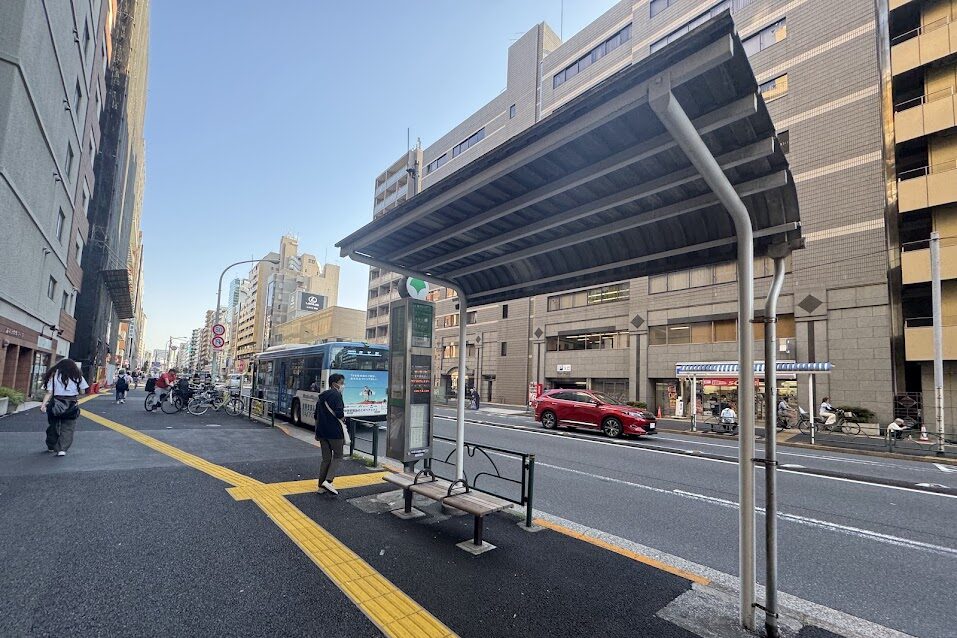
हर कुछ सौ मीटर पर ऐसे बस स्टॉप होते हैं। स्टॉप पर लगे टाइमटेबल को देखें, अपने बस नंबर को पहचानें और उसका समय जानें
जब आपकी बस आए, तो सामने वाले दरवाज़े से चढ़ें (टोक्यो में)। ड्राइवर के पास ही एक पेमेंट मशीन होती है—जैसे ही चढ़ें, पेमेंट कर दें।
टोक्यो में बस का किराया एक ही दर पर है: ¥200। कैश भी चल जाता है, लेकिन IC कार्ड हो तो बस टैप कीजिए।
English
You’ll see stops like this every few hundred meters. Check the timetable posted there, match your route number, and find out when your bus is coming.
When the bus arrives, board through the front door (in Tokyo). Right next to the driver is the fare machine—just pay as soon as you get on. Fares are flat: ¥200 in Tokyo. You can pay with cash, but if you have an IC card, simply tap and go.
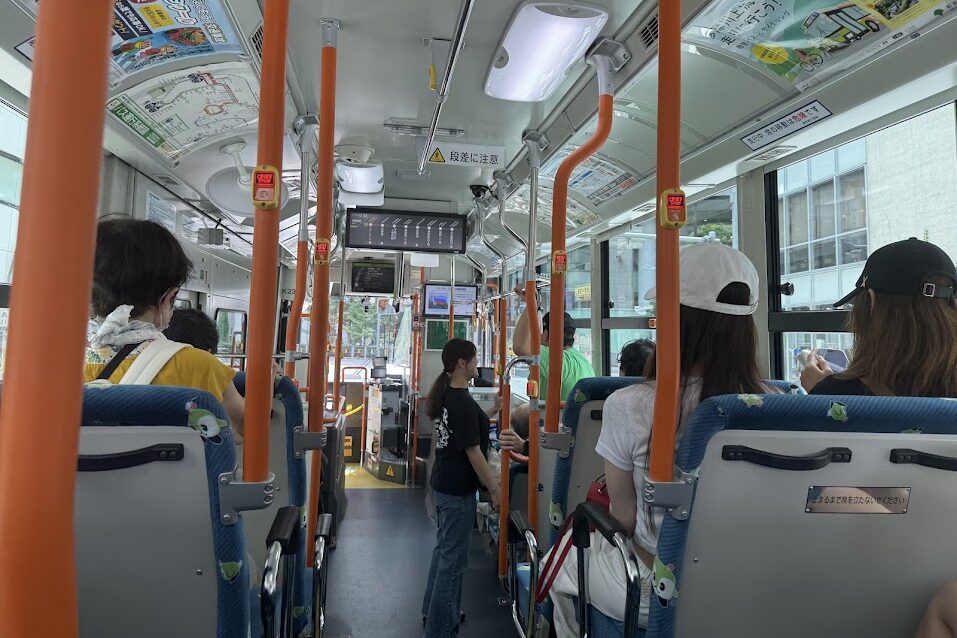
बस के अंदर, सबसे आगे एक स्क्रीन होती है जो अभी कहाँ हैं और अगला स्टॉप कौन सा है यह दिखाती है। स्टॉप से पहले अनाउंसमेंट भी होता है। जब अगला स्टॉप आपका हो, तो पास वाला बटन दबाइए।
जब बस पूरी तरह रुक जाए, तब बीच वाले दरवाज़े से उतरें। पेमेंट तो पहले ही हो चुका है—अब बस आराम से उतर जाइए!
English
Inside the bus, a screen at the front shows the current location and the next stop. There’s also an announcement before each stop. When your destination is the next stop, press the nearby button to request a stop.
To get off, wait until the bus comes to a full stop, then exit through the middle door. You’ve already paid—so all that’s left is to hop off.
आइए, ट्रेन और बस की सवारी करें! / Final Thoughts: Give Trains and Buses a Try!
शुरुआत में जापान की ट्रेन या बस लेना थोड़ा डरावना लग सकता है—लेकिन एक बार आपने कोशिश की, तो आपको समझ आएगा कि यह कितना आसान और सुविधाजनक है।
सिर्फ़ एक IC कार्ड से आप पूरे शहर में आराम से सफर कर सकते हैं। और अब जब आपको तरीका पता है, तो सफर एक चुनौती नहीं, एक मज़ेदार अनुभव बन जाएगा।
तो चलिए, आज से सफर को अपनाइए… और जापान को थोड़ा और क़रीब से जानिए।
English
At first, taking public transport in Japan might feel a little intimidating—but once you try it, you’ll see just how easy and efficient it really is.
With just one IC card, you can ride trains and buses across the city with confidence.
And now that you know the basics, getting around is no longer something to worry about—it’s something to enjoy!
So go ahead—hop on, ride smart, and explore more.
If you’re planning to go beyond the city—say, to Kyoto or Hokkaido—check out our guide on long-distance travel by airplane and Shinkansen.
→ [Travel Farther by Plane or Shinkansen★]

